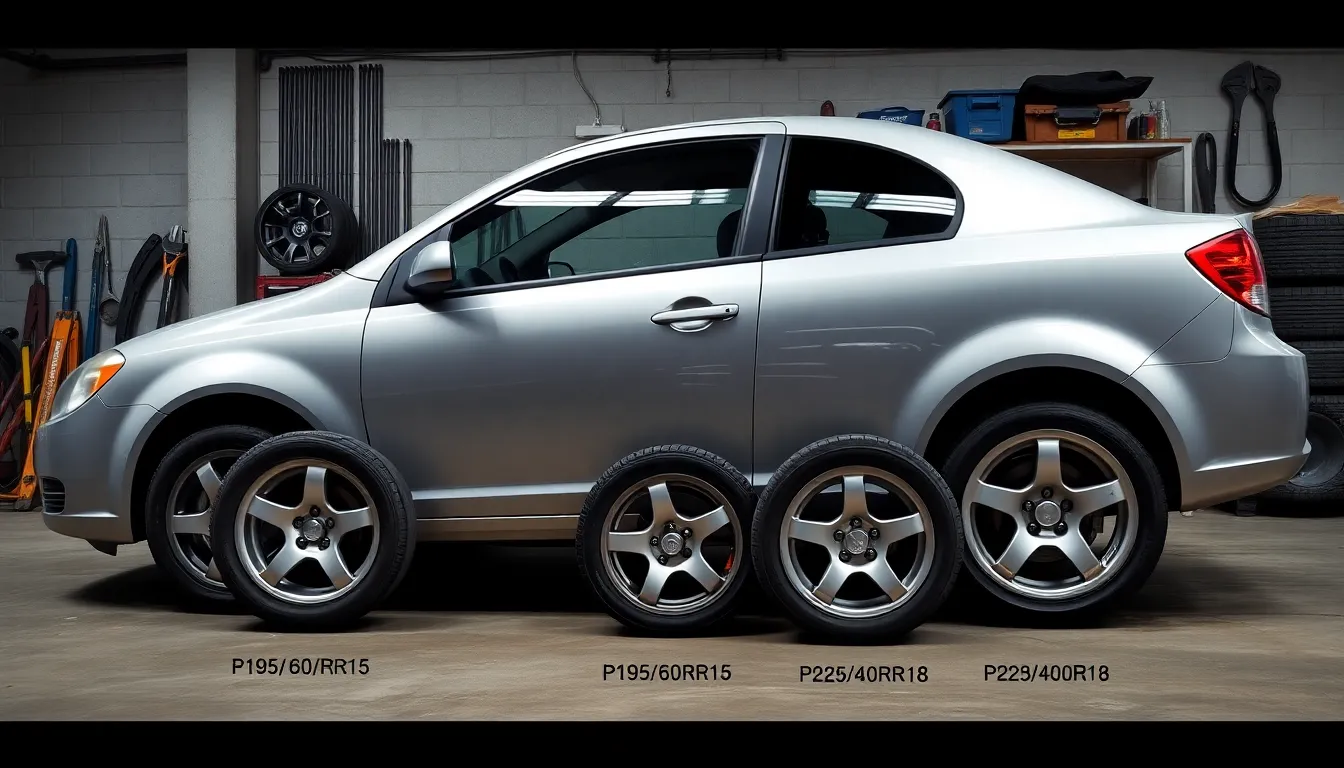Are you struggling to find the right tire size for your 2008 Chevrolet Cobalt? Getting the perfect fit isn’t just about performance—it’s about safety and efficiency too.
Finding the correct tire size for your 2008 Chevy Cobalt doesn’t have to be complicated. Whether you’re replacing worn tires or looking to upgrade, knowing your vehicle’s exact tire specifications is essential. The 2008 Cobalt came with different trim levels, each potentially requiring different tire sizes depending on whether you have the LS, LT, Sport, or SS model.
Understanding the 2008 Chevrolet Cobalt Tire Specifications
The 2008 Chevrolet Cobalt comes with exact tire specifications designed to optimize vehicle performance, handling, and safety. These specifications vary across different trim levels, with factory-equipped tires carefully selected to match each model’s performance characteristics.
For the base LS and LT trims, the standard tire size is P195/60R15. These tires provide a balanced combination of comfort, fuel efficiency, and adequate traction for daily driving. The P designation indicates passenger vehicle tires, 195 represents the width in millimeters, 60 is the aspect ratio (tire height as a percentage of width), and 15 refers to the wheel diameter in inches.
Sport models typically come equipped with larger P205/55R16 tires. The increased width offers improved handling and cornering capabilities, making them suitable for the Sport trim’s more performance-oriented character. These tires deliver enhanced grip while maintaining reasonable comfort for everyday use.
The high-performance SS trim features P215/45R18 tires. These low-profile tires with their wider footprint provide maximum road contact, superior cornering ability, and responsiveness needed for the SS’s turbocharged engine. The larger 18-inch wheels also contribute to the SS model’s aggressive stance and appearance.
Each tire size impacts various aspects of your Cobalt’s performance. Wider tires (higher first number) provide better grip but may reduce fuel economy. Lower profile tires (smaller middle number) improve handling but can result in a firmer ride. Larger wheel diameters enhance braking performance and visual appeal at the expense of ride comfort over rough surfaces.
Understanding these specifications is crucial when replacing your Cobalt’s tires. Using the manufacturer-recommended sizes ensures proper fitment and maintains the vehicle’s designed performance characteristics without affecting critical systems like your speedometer accuracy or ABS functionality.
Original Factory Tire Sizes for the 2008 Cobalt
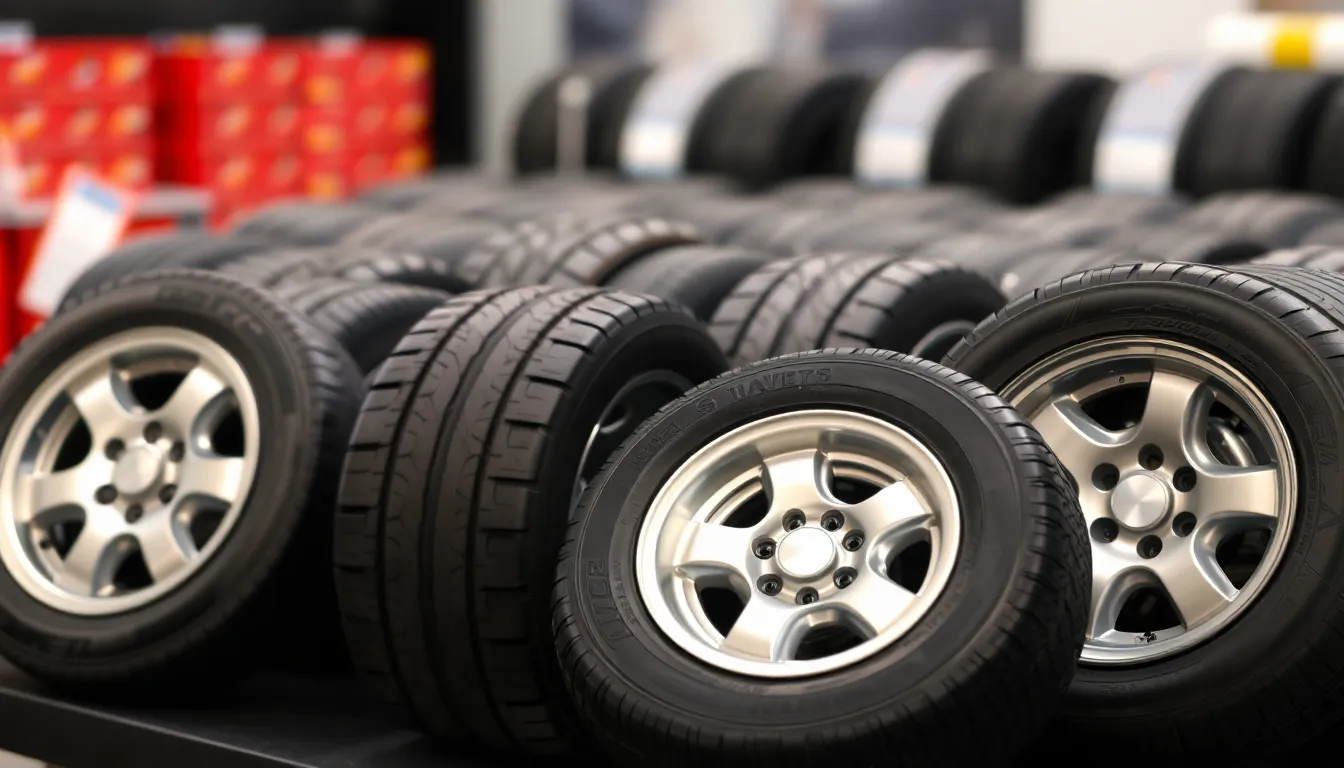
The 2008 Chevrolet Cobalt came equipped with different tire sizes based on trim level and model configuration. Each trim was designed with exact tire dimensions to optimize performance characteristics relevant to that particular model variant.
Base Model Tire Dimensions
Base model 2008 Cobalt LS vehicles with 5-speed manual transmissions featured 195/65R15 all-season tires mounted on 15-inch steel wheels. These wheels typically included full bolt-on wheel covers for improved aesthetics. LT trim levels often came with slightly larger 205/55R16 tires, providing a minor upgrade in handling and road presence compared to the entry-level LS configuration. The standard tire sizes for base models strike a balance between comfort, fuel efficiency, and adequate traction for everyday driving conditions. Steel wheels on base models kept production costs lower while still delivering reliable performance for typical commuting needs.
Sport and SS Model Tire Specifications
Sport trim Cobalts rolled off the assembly line with 205/50R17 tires wrapped around 17-inch wheels, offering enhanced cornering capabilities and a more aggressive stance. The performance-oriented SS models featured significantly larger 225/40R18 tires mounted on 18-inch wheels, specifically engineered to complement the SS’s sportier handling characteristics and higher power output. Unlike base models, both Sport and SS trims utilized alloy wheels rather than steel ones to accommodate the larger tire sizes and reduce unsprung weight. These larger tire specifications provided SS drivers with increased road contact area, resulting in improved grip during acceleration and cornering maneuvers. Performance-oriented tire dimensions on SS models were carefully selected to handle the additional power of the turbocharged engine while maintaining appropriate speedometer calibration.
| Trim Level | Tire Size | Wheel Diameter | Wheel Material |
|---|---|---|---|
| LS (Base) | 195/65R15 | 15 inches | Steel |
| LT | 205/55R16 | 16 inches | Steel/Alloy |
| Sport | 205/50R17 | 17 inches | Alloy |
| SS | 225/40R18 | 18 inches | Alloy |
How to Read Your Chevrolet Cobalt Tire Size Information
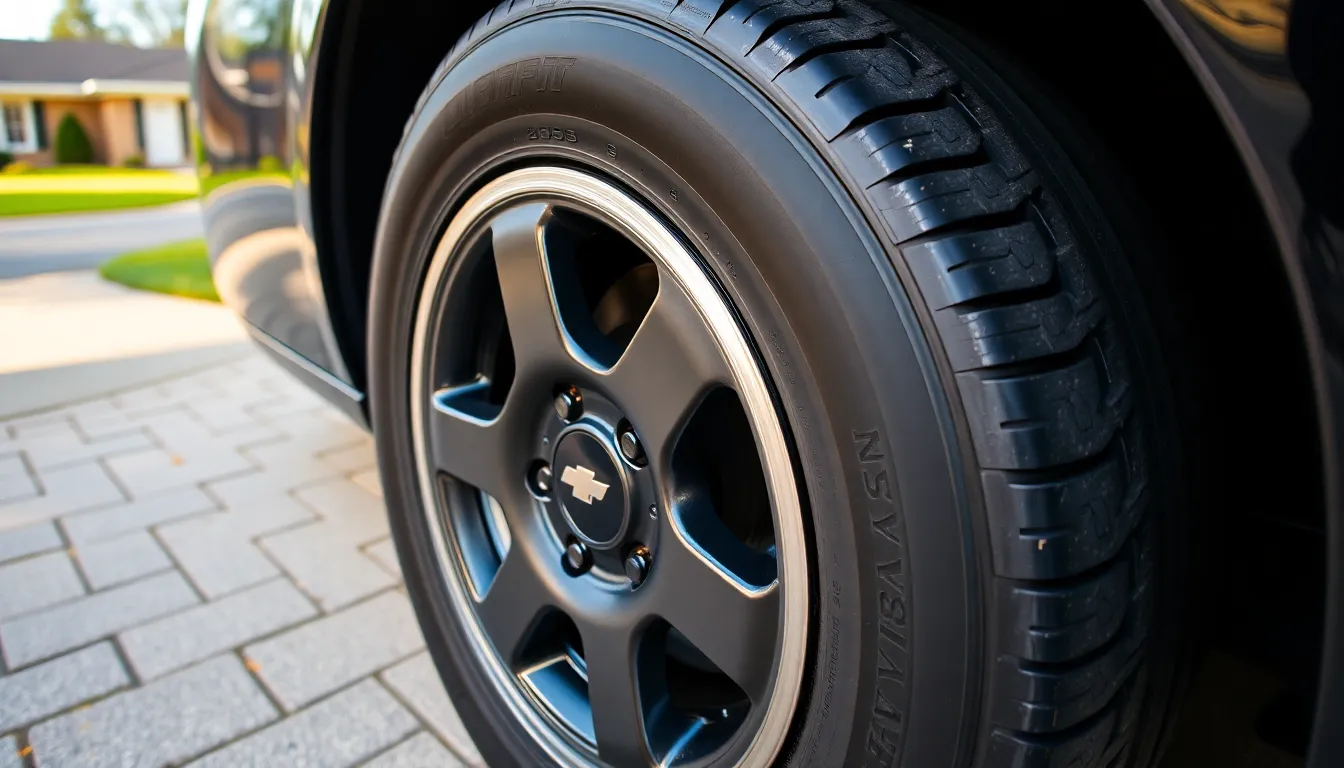
Tire sizes on your 2008 Chevrolet Cobalt follow a exact format that contains crucial information about dimensions and construction. The sidewall markings display numbers and letters in a sequence like 205/55R16, which serves as a code for tire specifications.
Decoding the Sidewall Markings
Each component in your Cobalt’s tire size designation represents a exact measurement or characteristic. The first number (205) indicates the tire width in millimeters from sidewall to sidewall. Following this, the aspect ratio (55) shows the tire’s height as a percentage of its width – in this example, the sidewall height is 55% of the 205mm width. The letter “R” stands for radial construction, the most common tire design featuring layers running radially across the tire. The final number (16) represents the wheel diameter in inches, which must match your Cobalt’s wheel size exactly.
Speed and Load Ratings Explained
Load index appears as a number on your tire sidewall, indicating the maximum weight capacity each tire can support when properly inflated. Your Cobalt’s tires also feature a speed rating letter that defines the maximum sustainable speed – common ratings include S (112 mph), T (118 mph), H (130 mph), and V (149 mph). Performance trims like the Cobalt SS typically use higher speed ratings such as V to accommodate their enhanced capabilities. For safety and optimal performance, always match or exceed the original equipment specifications listed on your vehicle’s placard or in the owner’s manual when replacing tires.
Recommended Replacement Tires for Your 2008 Cobalt
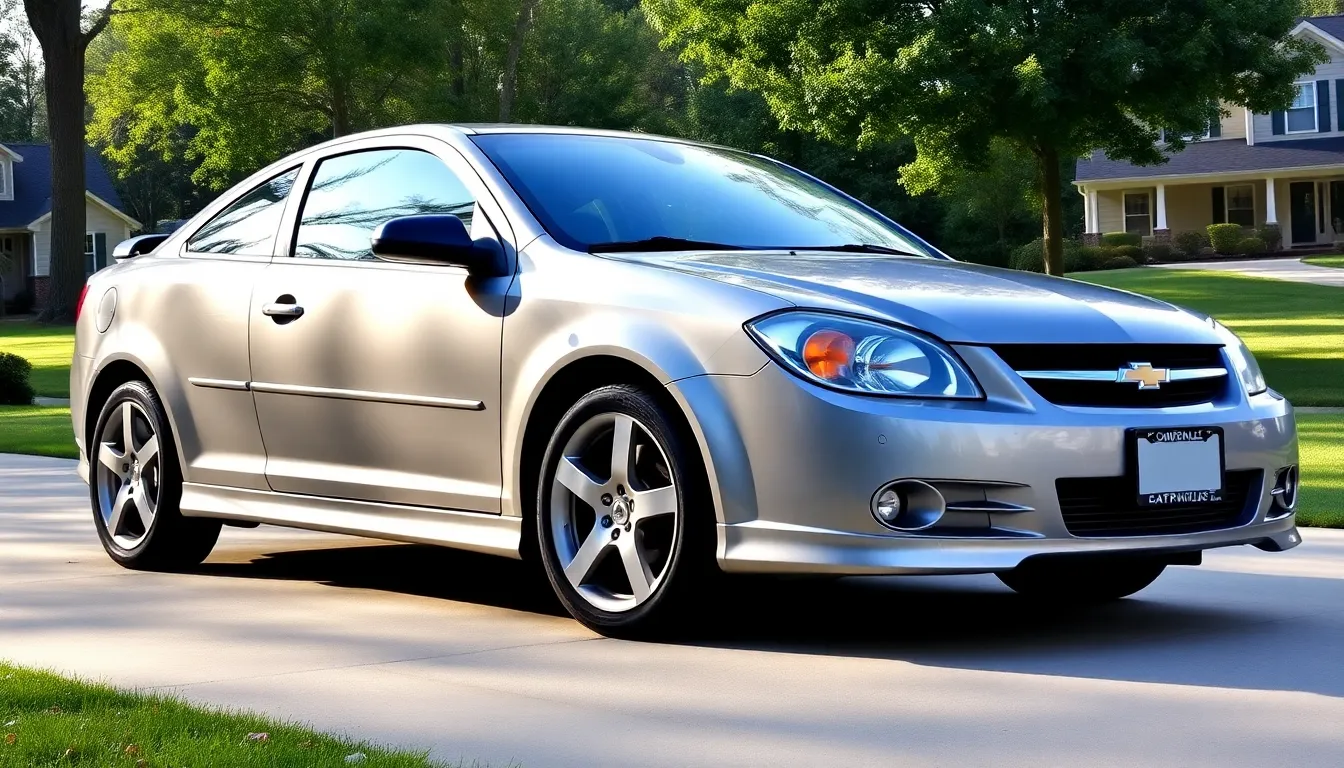
Finding quality replacement tires for your 2008 Chevrolet Cobalt depends on your trim level and driving preferences. Each Cobalt trim comes with exact tire size requirements that affect handling, comfort, and performance characteristics.
Budget-Friendly Options
Budget-conscious Cobalt owners have several economical tire options that don’t compromise safety or reliability. The LS trim with its common 195/65R15 size offers many affordable all-season alternatives from major manufacturers. LT models using 205/55R16 tires also benefit from competitive pricing due to this size’s popularity across many vehicle makes. These standard sizes typically cost less to replace than the larger performance tires found on Sport and SS trims. Major tire brands like Goodyear, Michelin, and Bridgestone produce budget-friendly all-season options that provide decent traction in various weather conditions while delivering reasonable tread life for daily driving needs.
Performance Upgrade Alternatives
Performance enthusiasts can significantly enhance their Cobalt’s handling characteristics with strategic tire upgrades. SS trim owners already enjoy the advantages of 225/40R18 tires with wider contact patches and lower sidewalls that maximize cornering grip. Upgrading to high-performance tires such as Michelin Pilot Sport or Continental ExtremeContact in this size can transform the driving dynamics of your Cobalt SS. Sport trim owners with 205/50R17 tires can opt for ultra-high-performance alternatives that deliver sharper handling response without requiring wheel size modifications. These performance-oriented tires provide improved road holding, quicker steering response, and better feedback through the wheel, though they typically sacrifice some ride comfort and may wear faster than standard all-season options.
Benefits of Maintaining Proper Tire Size
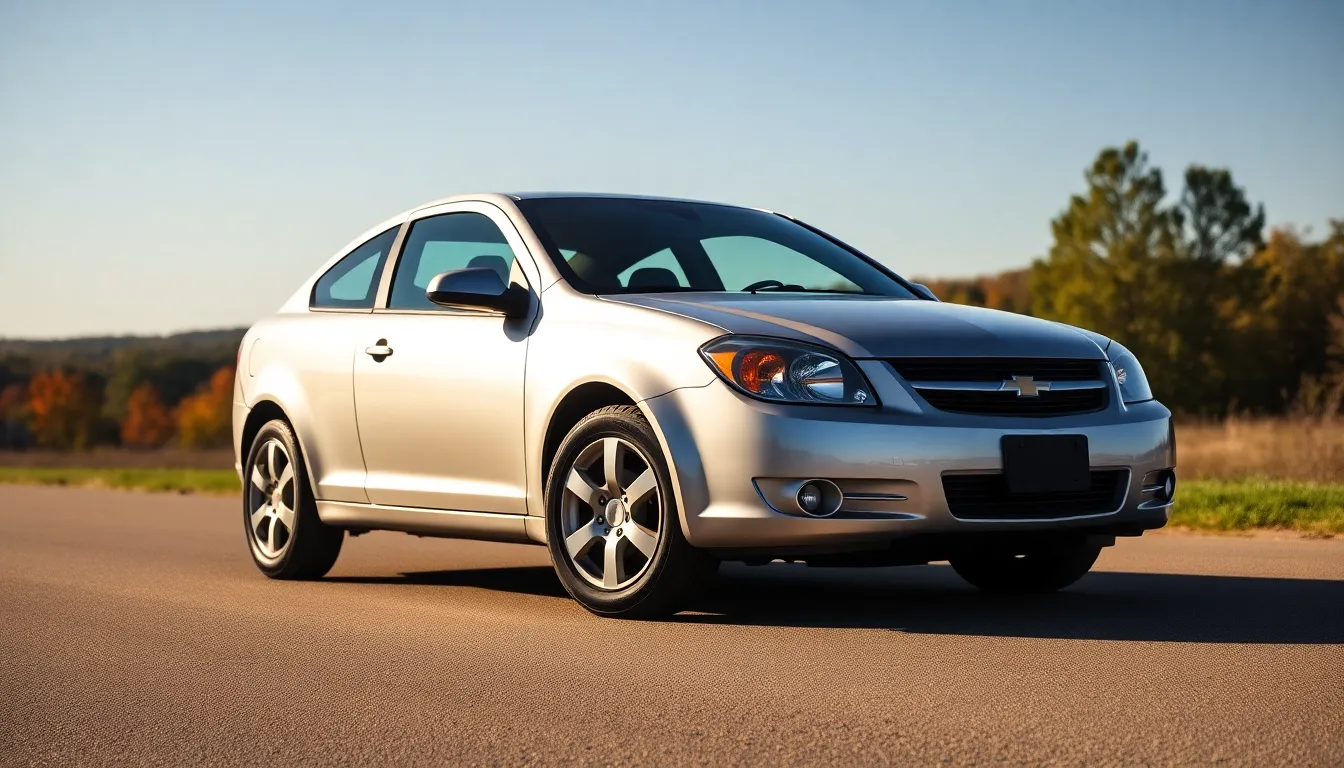
Maintaining the proper tire size on your 2008 Chevrolet Cobalt ensures optimal vehicle performance and safety. Using manufacturer-recommended tire sizes creates the perfect balance between handling, comfort, and efficiency that Chevrolet engineers designed for your exact Cobalt trim.
Handling and Performance Impacts
Tire size directly affects how your Cobalt handles on the road. Smaller tires like the 195/60R15 offer more comfort but provide less responsive handling in challenging driving conditions. Larger, lower-profile tires such as the 225/40R18 found on the SS trim significantly improve cornering grip and overall road contact at the expense of ride comfort. Your Cobalt’s steering response remains crisp and predictable only when the correct tire dimensions maintain proper suspension geometry. Incorrect tire sizes can seriously disrupt critical safety systems including traction control and ABS, potentially reducing vehicle control during emergency maneuvers. Each tire size option was specifically engineered to complement the performance characteristics of your particular Cobalt trim level.
Fuel Economy Considerations
Tire size plays a crucial role in your Cobalt’s fuel efficiency. Properly sized tires contribute to optimal rolling resistance, helping you get more miles per gallon. Oversized or heavier tires increase rolling resistance and create unnecessary drag, directly impacting your fuel consumption. Maintaining recommended tire pressure for your exact tire size further enhances fuel economy by reducing friction between the tire and road surface. Your Cobalt’s computer systems, including those monitoring fuel injection and transmission shifting patterns, work most efficiently when the correct tire size provides accurate speed data. The standard 195/65R15 tires on the base LS model were specifically chosen to balance fuel economy with adequate performance for everyday driving conditions.
Common Tire Issues with the 2008 Chevrolet Cobalt

The 2008 Chevrolet Cobalt experiences several recurring tire problems that owners should monitor. Uneven tire wear ranks among the most frequent issues, often resulting from alignment problems or suspension component failures. Many Cobalt drivers report vibrations at highway speeds due to improper tire balancing, creating uncomfortable driving conditions and potentially accelerating tire deterioration.
Tire Pressure Monitoring System (TPMS) alerts frequently plague Cobalt owners, sometimes indicating actual slow leaks but occasionally stemming from faulty sensors. Lower-profile tires on sportier trims like the SS model with 225/40R18 tires face increased vulnerability to sidewall damage from road hazards such as potholes and debris. Road noise presents another common complaint, particularly with certain tire models and on rougher pavement surfaces.
Performance varies significantly across the Cobalt’s trim-exact tire sizes:
| Trim | Common Tire Sizes |
|---|---|
| LS | 195/60R15, 195/65R15 |
| LT | 195/60R15, 205/55R16 |
| Sport | 205/50R17 |
| SS | 225/40R18 |
| SS Supercharged | 215/45R18 |
Regular maintenance helps mitigate these issues and extend tire life. Checking tire pressure monthly, rotating tires every 5,000-7,000 miles, and maintaining proper alignment significantly reduce premature wear patterns. Sport and SS models with their lower-profile tires require extra vigilance about pressure and visual inspection for sidewall damage after encountering rough road conditions.
Conclusion
Choosing the right tire size for your 2008 Chevrolet Cobalt isn’t just about fitment – it’s essential for maintaining safety performance and fuel efficiency. Whether you drive an LS LT Sport or SS model understanding your exact trim requirements helps you make informed decisions when replacing tires.
Remember that proper tire maintenance including regular pressure checks rotation and alignment will extend the life of your tires regardless of size. By adhering to manufacturer specifications and considering your driving habits you’ll ensure optimal handling comfort and performance from your Cobalt for years to come.
When in doubt always consult your owner’s manual or speak with a tire professional to find the perfect balance between performance needs and budget constraints for your exact Cobalt trim.
Frequently Asked Questions
What tire size does a 2008 Chevrolet Cobalt use?
The 2008 Chevrolet Cobalt uses different tire sizes depending on the trim level. The base LS trim comes with P195/60R15 tires, the LT trim uses P205/55R16, the Sport model features P205/50R17, and the high-performance SS trim is equipped with P225/40R18 tires. Check your specific trim level before purchasing replacement tires.
How do I read the tire size on my Cobalt?
Tire sizes like 205/55R16 provide key information: the first number (205) is the width in millimeters, the second number (55) is the aspect ratio (sidewall height as a percentage of width), R indicates radial construction, and the last number (16) is the wheel diameter in inches. Additional markings include load index and speed rating.
Will using the wrong tire size affect my Cobalt’s performance?
Yes, using incorrect tire sizes can significantly impact your Cobalt’s performance. Wrong sizes can affect handling, speedometer accuracy, ABS functioning, fuel economy, and overall ride comfort. Always match or exceed the manufacturer’s recommended specifications to maintain optimal safety and performance characteristics.
What are the best replacement tires for a Cobalt LS or LT?
For Cobalt LS or LT trims, economical all-season tires from brands like Goodyear, Michelin, and Bridgestone offer good value. Look for options that balance decent traction, reasonable tread life, and comfort. These common tire sizes (P195/60R15 and P205/55R16) tend to be less expensive to replace while maintaining factory-level performance.
Are performance tires worth it for the Cobalt SS model?
Performance tires are definitely worth considering for the Cobalt SS. High-performance tires enhance the SS model’s handling capabilities and maximize the potential of its turbocharged engine. While they typically cost more and may have shorter tread life, they provide superior grip, cornering ability, and responsiveness that complement the SS’s performance-oriented design.
How often should I rotate the tires on my 2008 Cobalt?
You should rotate your Cobalt’s tires every 5,000-7,000 miles. Regular rotation is particularly important for Sport and SS models, which may experience more aggressive wear patterns. This maintenance practice helps ensure even tread wear, extends tire life, and maintains consistent handling characteristics across all four wheels.
Can I use larger tires on my Cobalt than recommended?
While slight upgrades are possible, significant size increases aren’t recommended without professional consultation. Larger tires can cause rubbing against wheel wells, affect speedometer accuracy, and alter handling characteristics. If you want better performance, consider tires with improved performance ratings in the factory-recommended size instead.
How does tire size affect fuel economy in the Cobalt?
Tire size directly impacts fuel economy. Properly sized tires minimize rolling resistance, optimizing fuel efficiency. Oversized tires can increase resistance and reduce MPG, while undersized tires may affect accuracy of the vehicle’s computer systems. Maintaining recommended tire pressure is equally important, as underinflated tires can reduce fuel economy by up to 3%.
What are common tire issues for 2008 Chevrolet Cobalts?
Common tire issues include uneven wear (often alignment-related), highway speed vibrations from improper balancing, and TPMS alerts. Sport and SS models with low-profile tires are more susceptible to sidewall damage from potholes and road hazards. Some owners also report increased road noise with certain tire models, particularly performance-oriented options.
How do I maintain proper tire pressure in my Cobalt?
Check your tire pressure monthly using a quality gauge when tires are cold. The recommended pressure (typically between 30-35 PSI) can be found on the driver’s door jamb sticker. Don’t use the maximum pressure listed on the tire sidewall. Proper inflation improves fuel economy, handling, and tire longevity while reducing the risk of blowouts.
